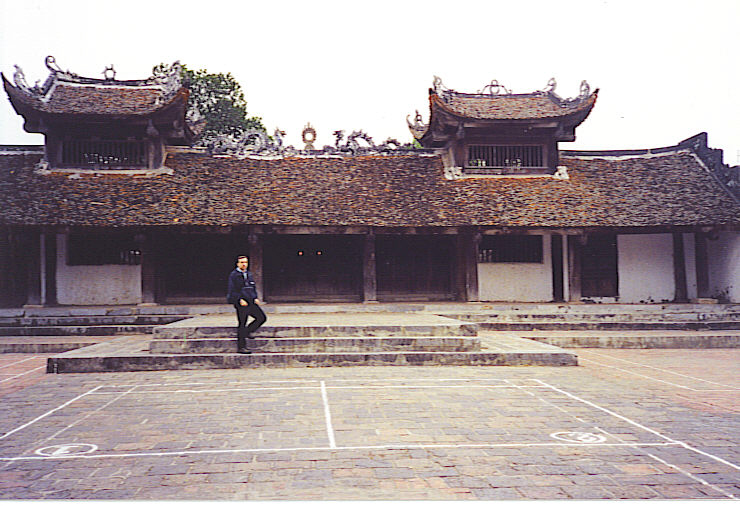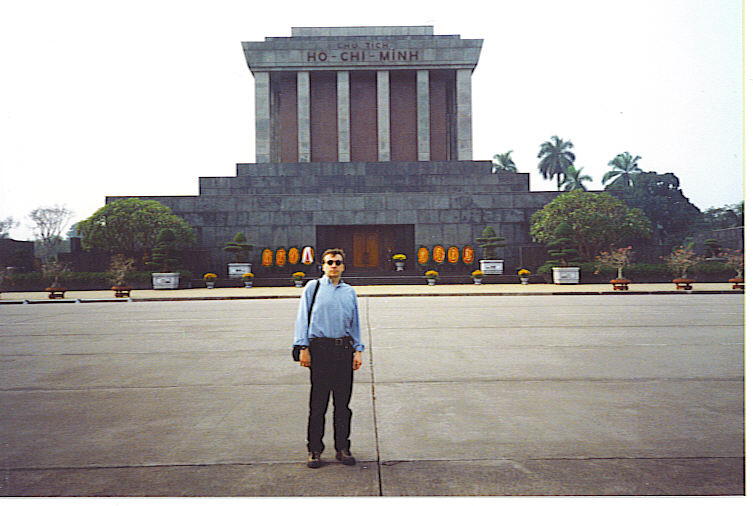This is Part II of experiencing the terra cotta warriors of Xi’an. You can read Part I here. Part I highlights the discovery of the warriors and gives some amazing views of the extent of the site. Part II takes a closer look at how the figures have been restored. The largest of the three pits housing these magnificant funerary art forms is mind-boggling in expanse and impressive in the sheer numbers of figures.
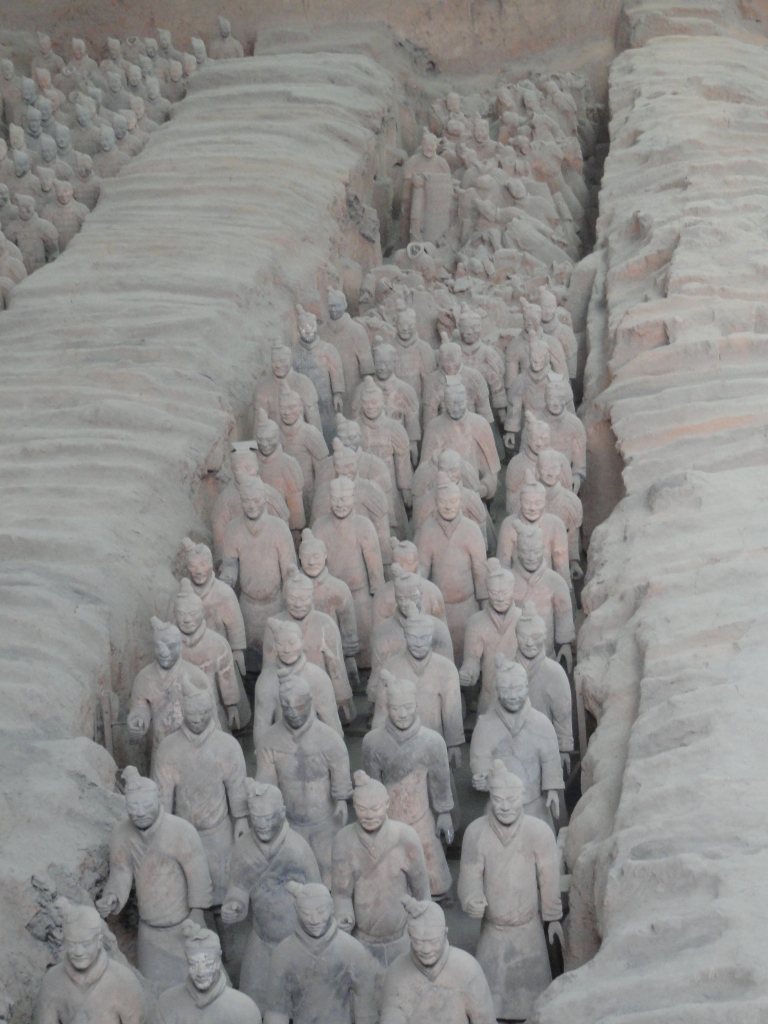
Getting to this point wasn’t easy. When the corridors were unearthed, most of the figures had been smashed. The painstaking work of reconstruction begins by excavating the spaces and systematically collecting the broken terra cotta shards.
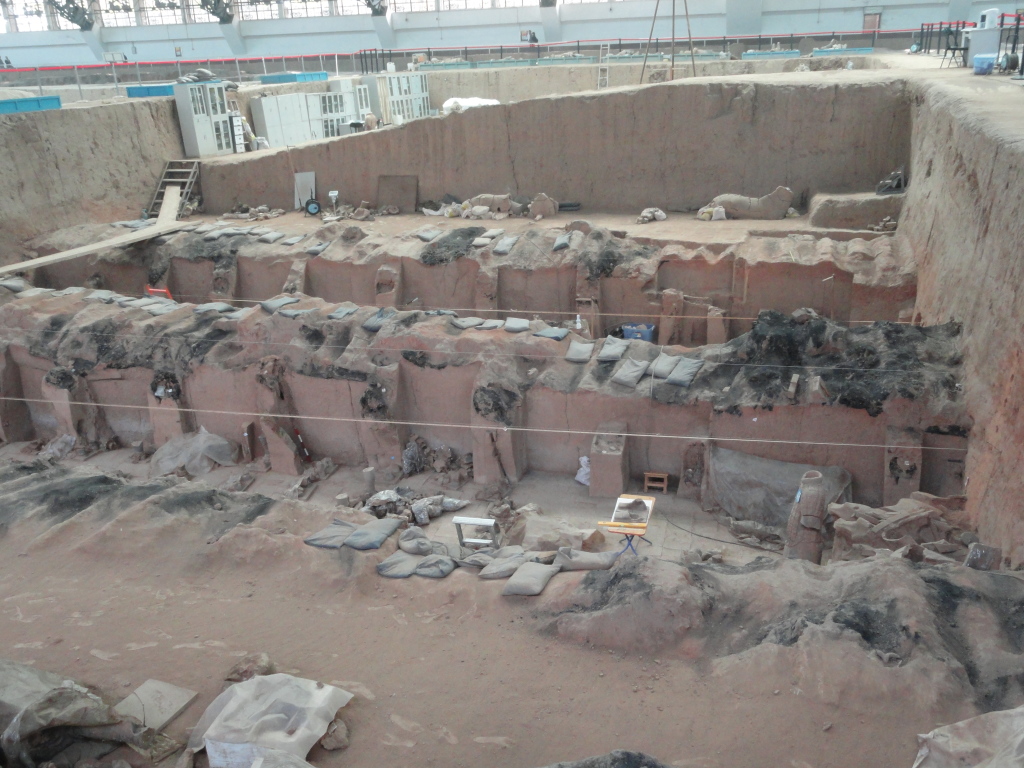
From there the pieces are brought to a laboratory area where workers combining the skills of artists, surgeons, and masons carefully rebuild each individual warrior. Supporting pieces, like legs and hands, are solid clay, while the upper bodies and heads are usually hollow for lightness.
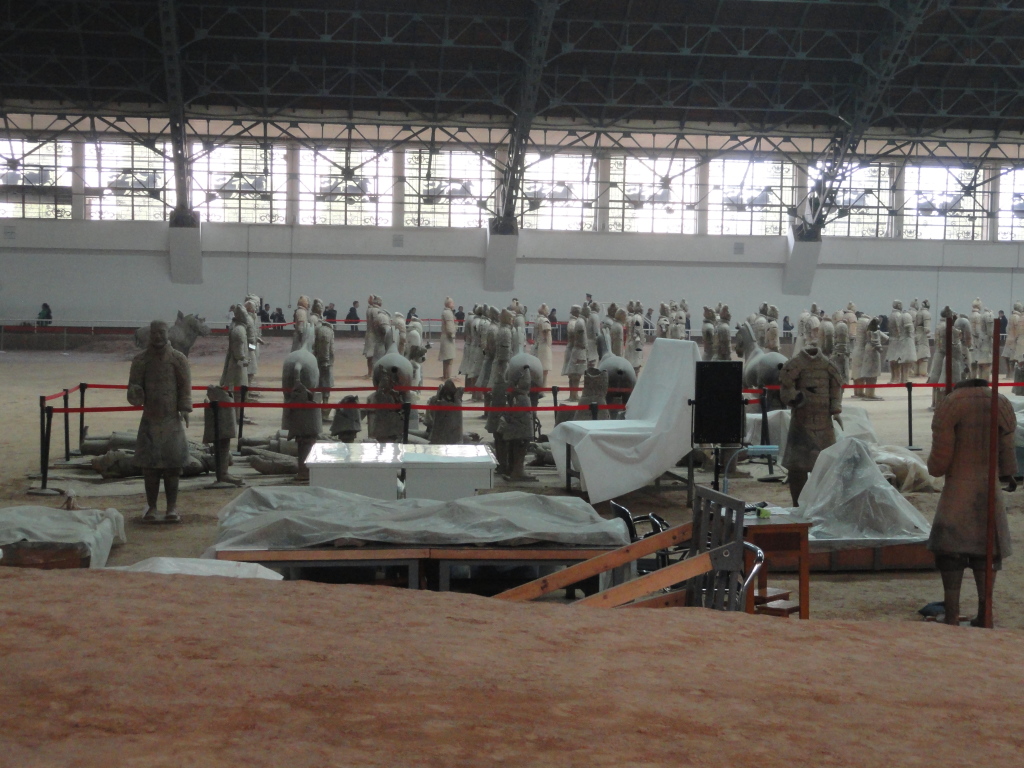
Almost done, some only have to wait for heads.
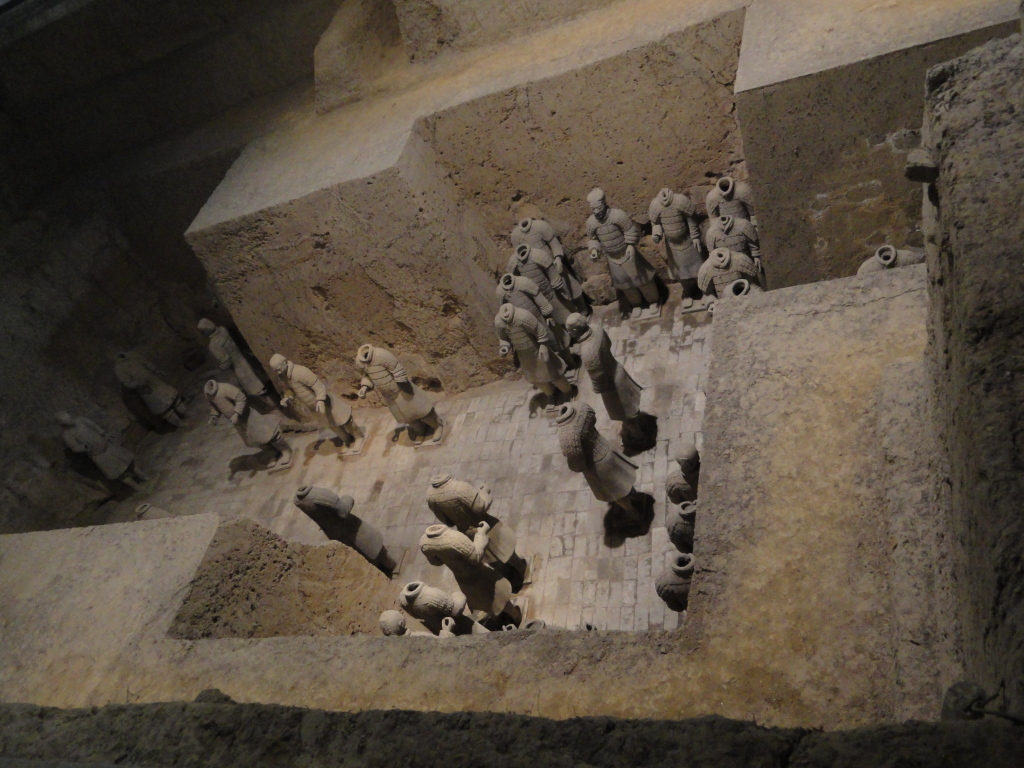
At a first cursory glance of the reconstructed figures they look exquisitely plain. This is misleading. Originally, the figures were coated in wondrous color, which immediately began to fade to the gray you see now as a result of oxidation and mold when the pits were exposed to the moist air. If you look closely at some of the figures, such as this pair of horses, you can seen hints of what they may have looked like when they were created.
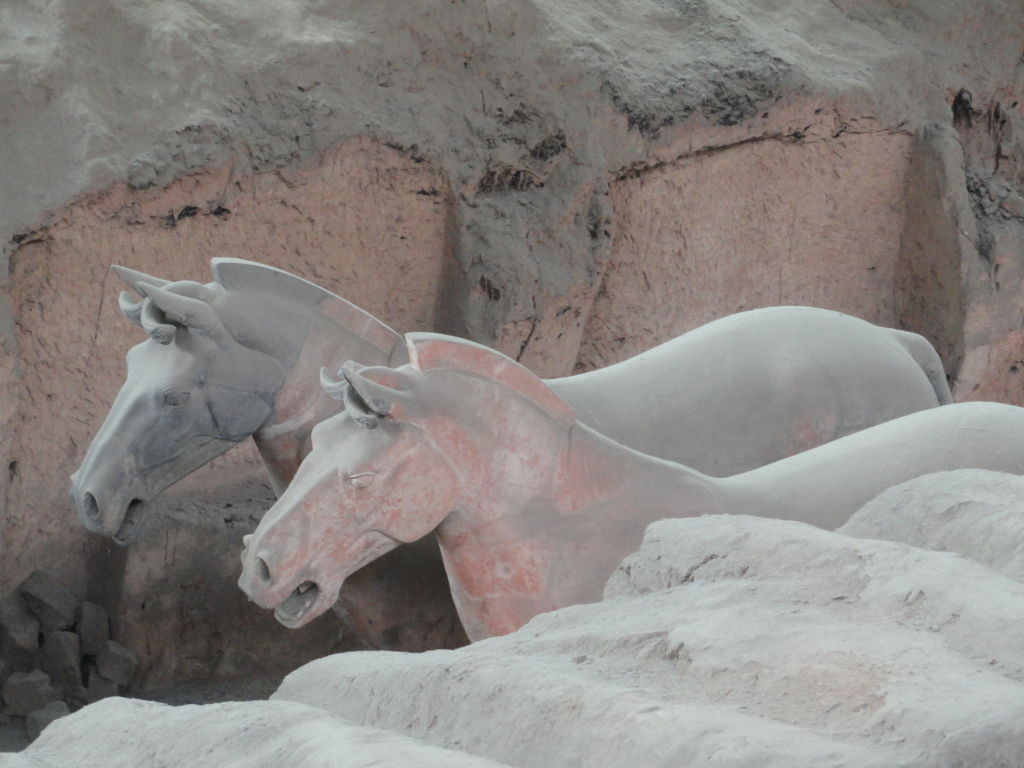
Even these don’t do them justice. These fallen (or perhaps resting) warriors show the full range of color that graced the terra cotta. Among the colors are purples composed of barium copper silicate, as well as pink, red, white, and lilac.
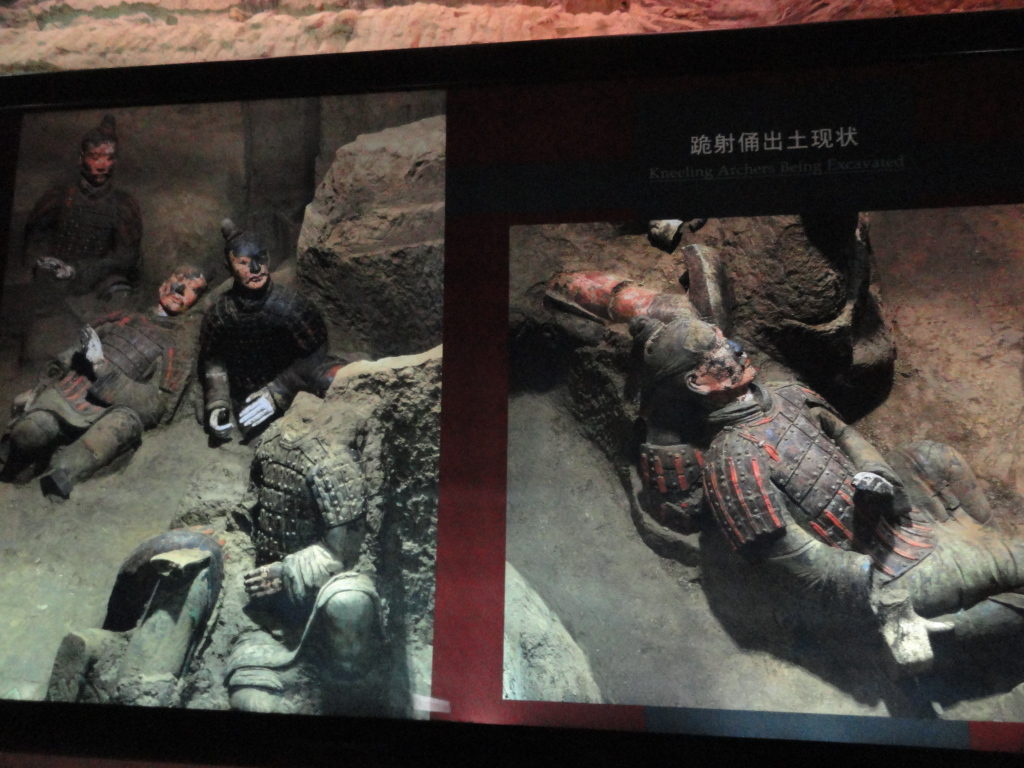
But still the figures are awe-inspiring. What they have lost in color they retain in sheer numbers and the knowledge of how much effort was involved in creating the thousands of figures. One can’t help but be equally impressed by the effort being made to restore the figures and the site.
Xi’an takes some planning to get to from Beijing, Shanghai or Hong Kong, but it’s well worth the effort. And if you haven’t already, check out Part I of the terra cotta warriors of Xi’an here.
David J. Kent is an avid science traveler and the author of Lincoln: The Man Who Saved America, in Barnes and Noble stores now. His previous books include Tesla: The Wizard of Electricity (2013) and Edison: The Inventor of the Modern World (2016) and two e-books: Nikola Tesla: Renewable Energy Ahead of Its Time and Abraham Lincoln and Nikola Tesla: Connected by Fate.
Check out my Goodreads author page. While you’re at it, “Like” my Facebook author page for more updates!
[Daily Post]



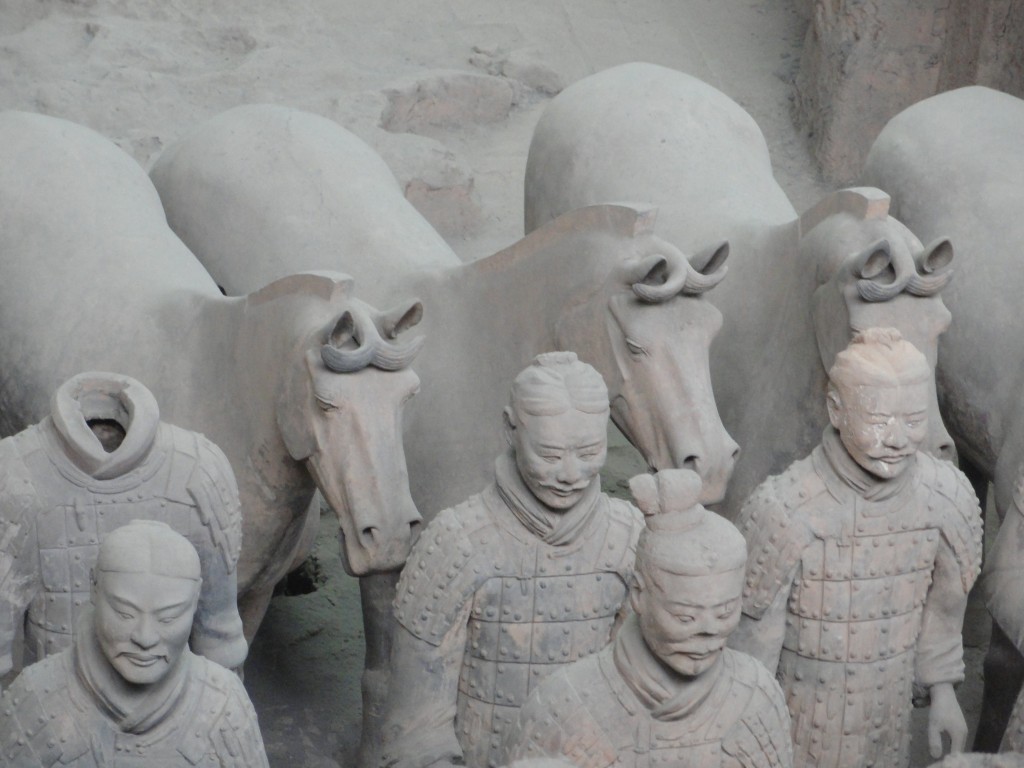
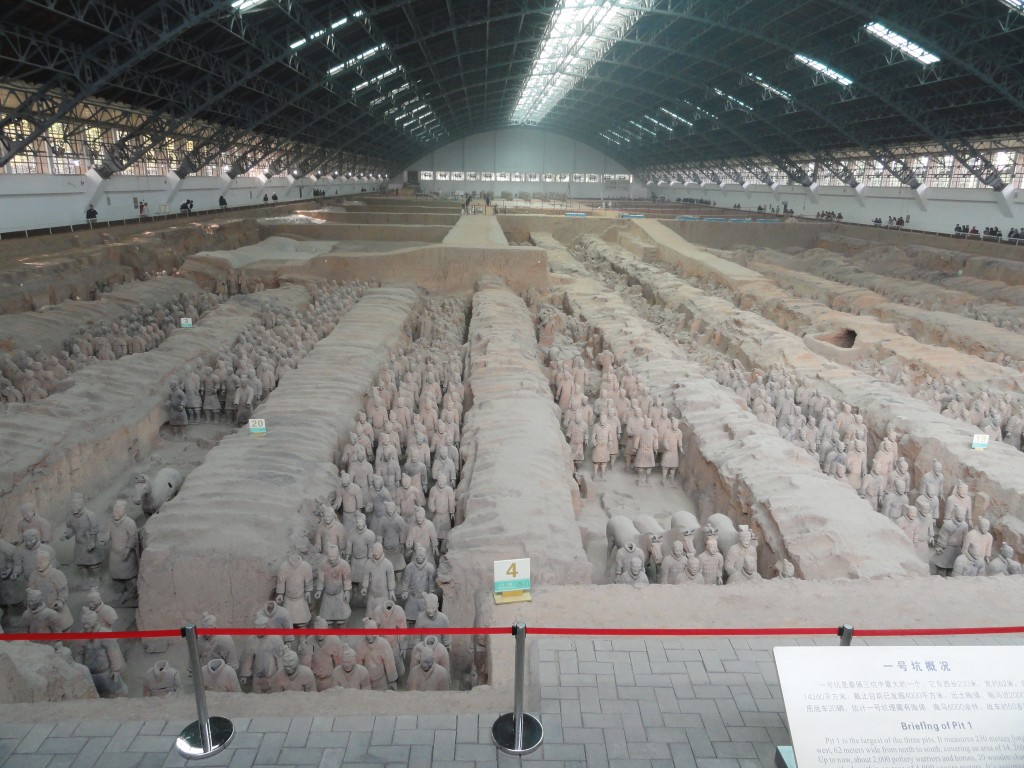
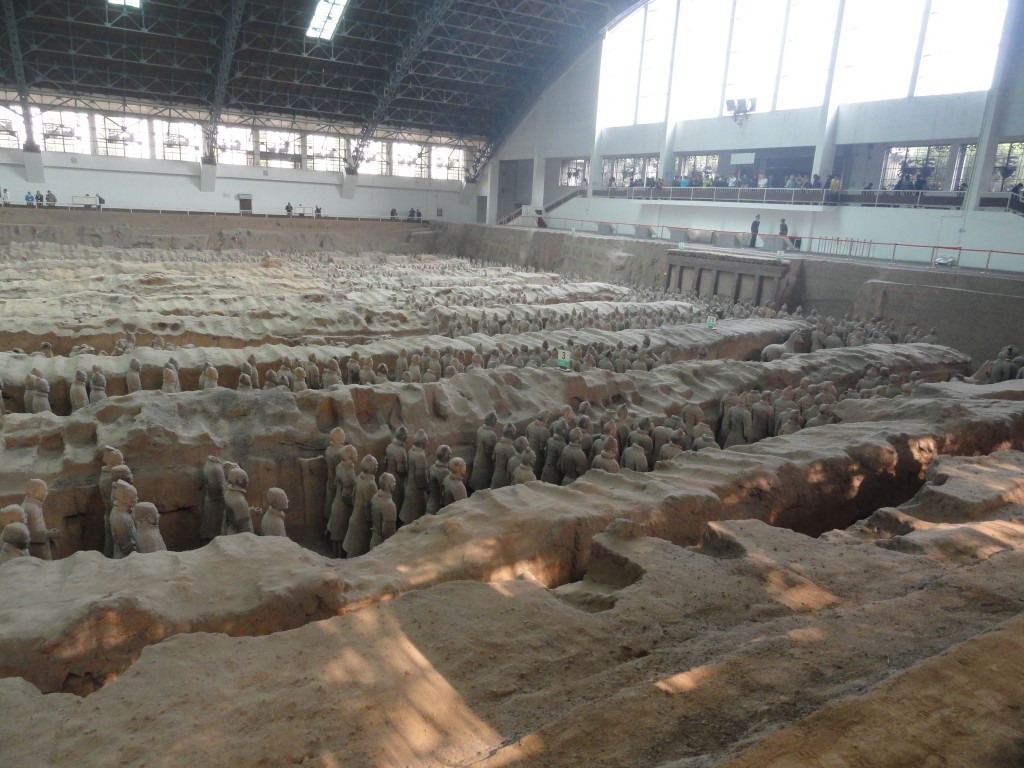

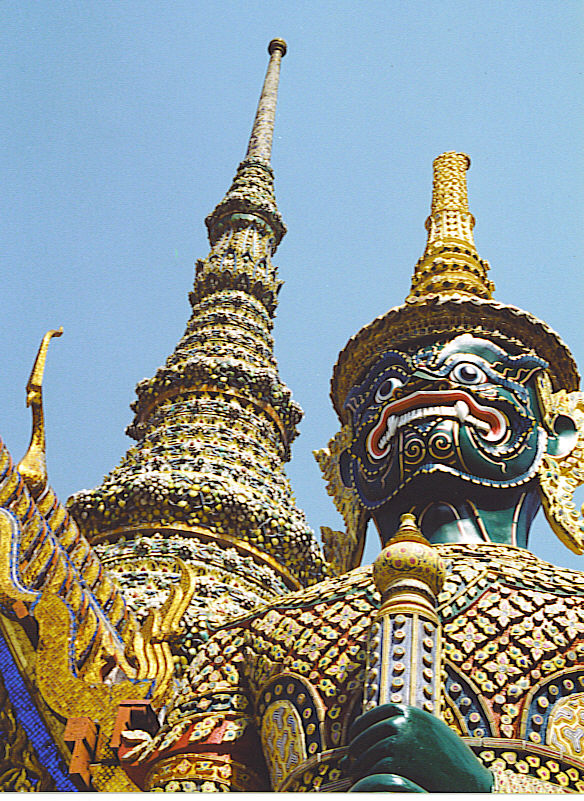
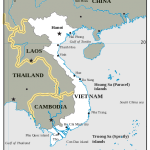 I went to Hanoi before going to Hanoi became cool. Long after the Vietnam War but before the United States normalized relations with the unified communist nation, my first major trip out of the country was to a place that remains very much foreign to most Americans.
I went to Hanoi before going to Hanoi became cool. Long after the Vietnam War but before the United States normalized relations with the unified communist nation, my first major trip out of the country was to a place that remains very much foreign to most Americans. In my last post I reminisced about my first real traveling experience out of the USA – to
In my last post I reminisced about my first real traveling experience out of the USA – to 